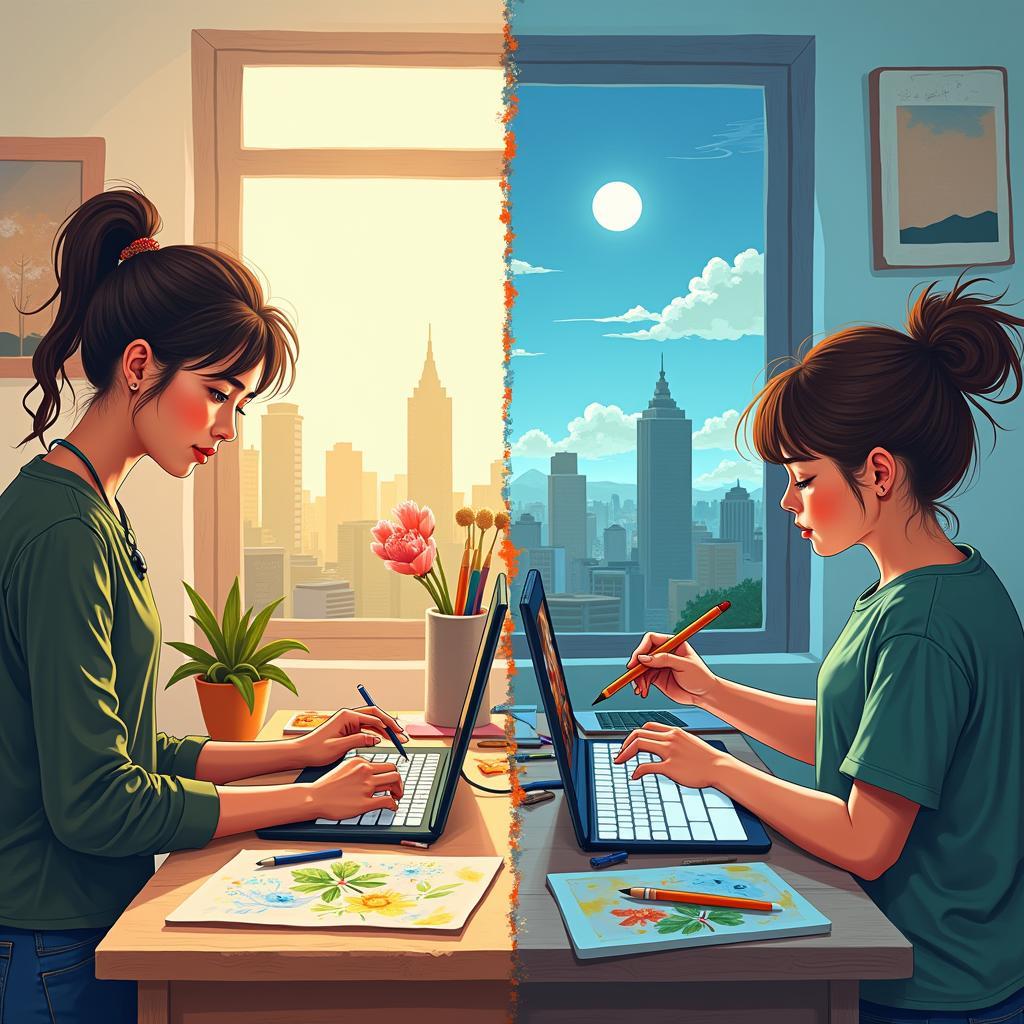The topic of digital technology’s influence on traditional art forms has become increasingly relevant in IELTS Writing Task 2, appearing frequently in recent years. Based on analysis of past exam questions, this theme often intersects with cultural preservation, modernization, and artistic innovation, similar to how automation is affecting job creation in developing countries.

Question Analysis
Some people believe that digital technology is destroying traditional art forms. To what extent do you agree or disagree with this statement?
This question requires candidates to evaluate the relationship between digital technology and traditional arts, similar to effects of social media on traditional news consumption. The key aspects to address include:
- Impact assessment
- Supporting evidence
- Personal stance
- Balanced argumentation
Sample Essay 1 (Band 8.5)
The integration of digital technology into artistic expression has sparked debate about its effects on traditional art forms. While some argue that digitalization threatens conventional artistic practices, I largely disagree with this view and believe that technology actually enhances and preserves traditional arts.
Digital tools have revolutionized how traditional art forms are created, preserved, and distributed. For instance, classical musicians can now reach global audiences through streaming platforms, while traditional painters can experiment with digital brushes that simulate ancient techniques perfectly. This technological integration, much like how does virtual reality change the learning experience, has actually revitalized interest in traditional arts among younger generations.
Furthermore, digital technology serves as a powerful preservation tool. Ancient artworks can be scanned and archived in high resolution, protecting them from physical deterioration. Traditional dance performances can be captured in 3D, allowing future generations to study and learn from master practitioners. This digital documentation ensures that cultural heritage remains accessible and intact for centuries to come.
However, it’s crucial to acknowledge that digital adaptation requires careful balance. While technology offers new possibilities, it should complement rather than replace traditional techniques. The key lies in maintaining the essence of traditional art forms while leveraging digital tools to enhance their creation, preservation, and appreciation.
In conclusion, digital technology acts more as a catalyst for evolution in traditional arts rather than a destructive force. By embracing technological innovation thoughtfully, we can ensure that traditional art forms not only survive but thrive in the digital age.
Band 8.5 Score Explanation
- Sophisticated vocabulary and complex structures
- Clear position with nuanced arguments
- Excellent paragraph organization
- Relevant examples and smooth transitions
- Natural integration of academic vocabulary
Sample Essay 2 (Band 6.5)
I disagree that digital technology is destroying traditional art forms. I think it helps traditional arts in many ways.
Digital technology makes it easier for people to learn about traditional arts. Many people can watch videos of traditional dances or music online. This helps them understand and appreciate these art forms better. Also, artists can use computers to make their traditional art look better and reach more people.
Some people worry that young people only want to use digital art now. But I think this is not true. Many young artists use both digital and traditional methods. For example, they might draw by hand first and then use computer software to add colors or effects. This shows that both methods can work together.
Digital technology also helps save old artworks. Museums use special cameras to take pictures of old paintings and sculptures. These pictures help experts study the art and fix damaged pieces. Without this technology, some traditional art might be lost forever.
In conclusion, I believe digital technology helps traditional arts more than it hurts them. The two can work together to make art better and more interesting for everyone.
Band 6.5 Score Explanation
- Clear but simple structure
- Basic vocabulary with some repetition
- Limited range of complex sentences
- Adequate examples but less sophisticated
- Some cohesive devices used
Key Vocabulary
- Integration (n) /ˌɪntɪˈɡreɪʃn/ – the process of combining two or more things
- Revitalize (v) /riːˈvaɪtəlaɪz/ – to give new life or vigor to
- Preservation (n) /ˌprezəˈveɪʃn/ – the act of maintaining something in its original state
- Catalyst (n) /ˈkætəlɪst/ – something that causes activity between two or more persons or forces
- Documentation (n) /ˌdɒkjumenˈteɪʃn/ – material that provides official information or evidence
In future IELTS tests, candidates might encounter variations of this topic, such as:
- Digital art’s role in modern education
- Traditional crafts in the digital era
- Virtual museums and cultural heritage
Practice writing your own essay on this topic and share it in the comments for feedback and discussion.